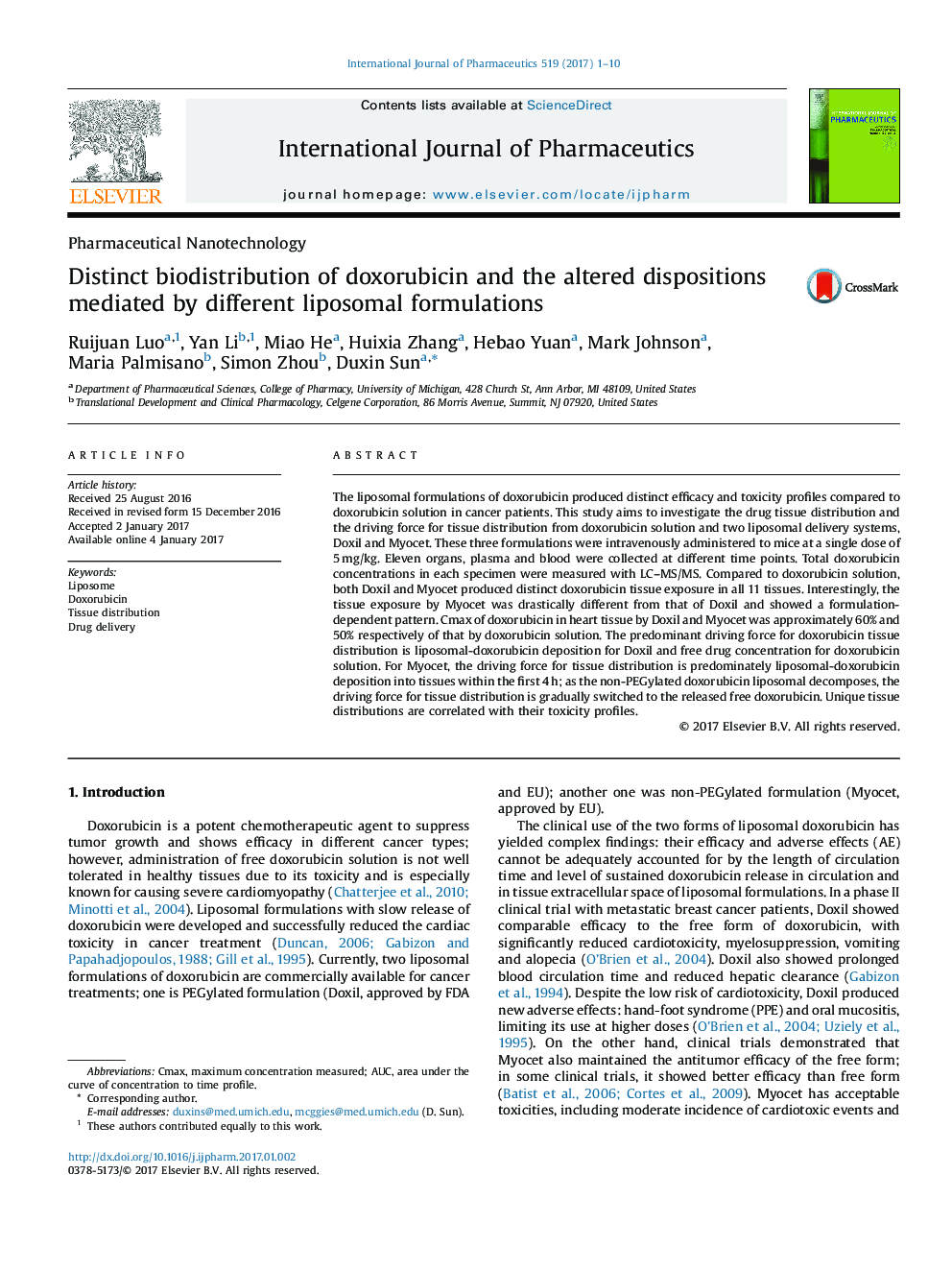| Article ID | Journal | Published Year | Pages | File Type |
|---|---|---|---|---|
| 5550700 | International Journal of Pharmaceutics | 2017 | 10 Pages |
The liposomal formulations of doxorubicin produced distinct efficacy and toxicity profiles compared to doxorubicin solution in cancer patients. This study aims to investigate the drug tissue distribution and the driving force for tissue distribution from doxorubicin solution and two liposomal delivery systems, Doxil and Myocet. These three formulations were intravenously administered to mice at a single dose of 5Â mg/kg. Eleven organs, plasma and blood were collected at different time points. Total doxorubicin concentrations in each specimen were measured with LC-MS/MS. Compared to doxorubicin solution, both Doxil and Myocet produced distinct doxorubicin tissue exposure in all 11 tissues. Interestingly, the tissue exposure by Myocet was drastically different from that of Doxil and showed a formulation-dependent pattern. Cmax of doxorubicin in heart tissue by Doxil and Myocet was approximately 60% and 50% respectively of that by doxorubicin solution. The predominant driving force for doxorubicin tissue distribution is liposomal-doxorubicin deposition for Doxil and free drug concentration for doxorubicin solution. For Myocet, the driving force for tissue distribution is predominately liposomal-doxorubicin deposition into tissues within the first 4Â h; as the non-PEGylated doxorubicin liposomal decomposes, the driving force for tissue distribution is gradually switched to the released free doxorubicin. Unique tissue distributions are correlated with their toxicity profiles.
Graphical abstractDriving force for tissue distribution of doxorubicin solution (blue), Doxil (red) and Myocet (green) was distinct among three formulations. The difference in doxorubicin tissue distribution may suggest different toxicity risk vs. benefit of different liposomal doxorubicin formulations.Download high-res image (92KB)Download full-size image
